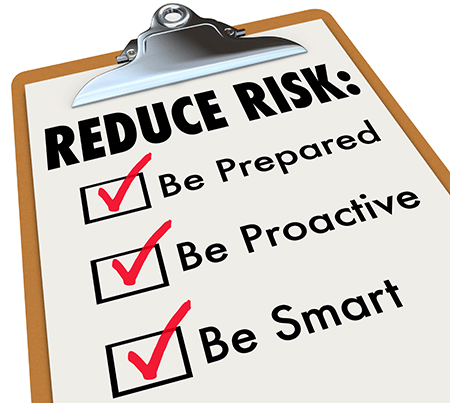Protect Your Portfolio from a Market Correction

By Dale Gillham |
Investing in the stock market is one of the most powerful strategies you can use to accelerate your wealth. Although, in my experience, a common theme among those who do invest is a firmly held belief that all they need to be successful is a "kick-ass" set of trading rules. If fact, ask anyone who trades the stock market if they know how to buy a stock and, chances are, 100 percent will say yes. Ask those same people if they know the right time to sell a stock, and 90 percent will say either no or that they get it wrong most of the time. Unfortunately, the reality is that most are focused on achieving quick returns rather than developing the strategies that will enable them to build long-term wealth.
In my book, one of the key criteria of astute investing is to consider when and how you will take your profits - in other words, you need to consider your exit strategy before you invest. Because trading is not about how much money you can make; it is about how much you do not lose over time.
Given the recent speculation of late that the stock market is likely to crash, there is no better time to learn how to protect your capital. That said, irrespective of the direction of the market, it is important to always use sound money management strategies to protect your portfolio from a stock market correction. So in this article I will share with you some simple but powerful strategies you can start using straight away.
How to protect your portfolio from a stock market correction

In my experience, I find that when a market is falling, most investor’s make errors in judgement that result in costly mistakes. Let me explain...
As the price of a stock falls, its dividend yield rises and, therefore, becomes more attractive to investors seeking dividends for income or for those who may be seeking a bargain. Some would have you believe that a high dividend yield means the stock is inexpensive and, therefore, an opportunity for investors to achieve good capital gains. But what this really means is that the stock has fallen to such an extent that the dividend yield is now much more attractive.
Investors, in general, don’t want high-risk investments, yet this is exactly what they get when they buy a stock that is falling in price just to receive a high dividend yield or because they perceive the stock price as being cheap.
To be considered a solid investment, the stock must represent good value, first and foremost, in terms of capital gains. In other words, you should look for undervalued stocks that are likely to achieve solid growth in terms of capital gains and a good income in the future.
Have an exit strategy to protect your portfolio
As I mentioned earlier, one of the most important aspects when trading the stock market is to have an exit strategy in the event you are wrong and the stock price moves against you or to protect profits. The fact is, if you want to be consistently profitable, you need to know not only how and why you are entering a trade, but more importantly, when and where you will exit so as to manage your investment risk and protect your portfolio.
Most investors never give this any consideration because when they invest, they expect the asset to rise. And while the asset may indeed rise, the value of the asset is not realised until you sell. Consequently, this equates to unrealised profits, as the asset could fall in value, which has the potential to impact your overall returns.
Apply your exit rules
In my book, Accelerate Your Wealth –It’s Your Money, Your Choice, I outline a number of strategies you can use to protect your capital. The simplest and safest is to apply a stop loss before you enter a trade. A stop loss is simply a price point to exit a trade in order to protect your capital. Depending on the volatility of the stock, I always recommend setting a stop loss of between 10 and 15 percent below your buy price or from its most recent high.

In reality, when it comes to trading and protecting your capital, a stop loss is your best course of action, as it will minimize your losses and has the potential to maximise your profits. Indeed, the better you get at selling, the more money you will make.
Another strategy you can use is to apply trend lines. Trend lines are one of the oldest and most effective methods for deciding which stocks to buy and sell, yet, they are one of the most underutilised tools. Why? The answer is simply lack of knowledge—many investors do not understand how a trend forms or how it unfolds over time.
There is an old saying that you should always trade with the trend. Indeed, if you can correctly ascertain the direction of the longer-term trend, either bull or bear, you can pinpoint, with great certainty, the right time to buy and sell, which means you will be far more profitable. That said, while it is important to always trade with the trend, if you were to always wait for the long-term trend to confirm, many low risk trades would be missed. And that is why trend lines are so effective.
In theory, applying trend lines is very simple—buy when a stock crosses above a downtrend line and sell when it crosses below an uptrend line, which can be done, quite simply, by applying a pencil and ruler to a bar chart. The major advantage of using trend lines is that they indicate when a trend may be changing before confirmation of the actual change in trend is evident.
The advantage of applying trend lines is that you will enter a stock in the early stage of an impending uptrend, but more importantly exit a stock at the early stage of a downtrend starting and in so doing protect your portfolio from a stock market correction.
Don’t exit too early
Another common theme that is prevalent among traders and investors, particularly those new to the stock market, is that they exit profitable trades too early for fear of losing their profit. In fact, you may be surprised to learn that a lot of investors tend to sell winning stocks only to buy losers, even though the winning investments they sell subsequently outperform the losers they continue to buy.
The investor rationale for such action is driven by the fear of taking additional risks with stocks in which they have already made money. Unwitting investors believe that their winners, having already risen, are now more likely to fall.
But trading the stock market for profit is about cutting your losses and letting your profits run. Therefore, unless a stock tells you to sell by triggering one of your exit signals, do not sell.
I promise you, if you develop a trading plan and follow your rules, you won’t fall into the trap of becoming an average investor, which means you will be far more profitable and successful in the long run.
Don’t exit too late or worse not at all
When a market is perceived as bearish, this does not mean that you can’t make money, because even in bear markets you will find stocks that are rising. The inverse is also true in a bull market, as some stocks will be falling in price. That said, when a market correction occurs, many investors let market sentiment influence their decision making and, as such, exit stocks far too late as they perceive that the bull run will go on forever. In reality, investors hang on to their shares that are falling in value in the hope that the stock will return to its previous highs.
However, you need to be aware that if a stock falls by 10 percent, your remaining capital needs to rise by 11 percent to break even. And if you continue to hold and suffer a 50 percent loss, then your remaining capital needs to rise by 100 percent just to break even. The longer you continue to hold onto stocks that are falling in value not only increases the overall risk to your portfolio but the harder it is to get back on top again.
But if you apply the exit strategies discussed earlier and wait for the dust to settle, you will not only be protecting your capital, you will have the added benefit of being able to compound more of it. In reality, taking small losses is far better for generating good portfolio returns and protecting your wealth, and more importantly, sleeping well at night.
Be proactive in protecting your portfolio from a stock market correction
If you take a more proactive approach to protect your portfolio from a stock market correction, you will be more profitable and endure less stress.

In my book, an active investor is someone who dedicates a few hours a month to managing their portfolio and they typically, turn over, on average, twenty to thirty per cent of the stocks within their portfolio in a year, although this will depend on market conditions. They also implement some simple well-defined rules that eliminate the uncertainty and fear that the majority tend to operate under when buying and selling stocks.
If you decide to become more active, I recommend developing a well-diversified portfolio of between 8 and 12 stocks from the top 20 by market capitalisation, although, depending on your level of knowledge, you may want to consider stocks out to the top 50. What you will come to discover, as I outline in my book, is that smaller portfolios with holdings concentrated in solid blue chip stocks represent lower risks, as you will have less stocks to manage and it will deliver more profitable results.
So, if I were to ask if you want to Accelerate Your Wealth with less risk and less stress, would you choose this option over making less money and having more stress. I know which option I would choose. Remember, it’s your money, your choice.
Others who read this article also enjoyed reading:
- Trading the Stock Market - Why Most Traders Fail
- How to Become a Full-Time Stock Trader
- Four Golden Rules to Investing in Shares
- The ABC of Share Trading
If you would like to learn how to protect your portfolio from a stock market correction and in turn be more profitable, review our trading courses. You can also check our what our clients have to say about their success in the stock market by viewing their reviews and testimonials.